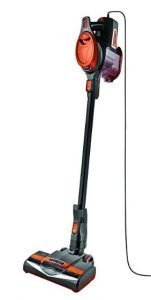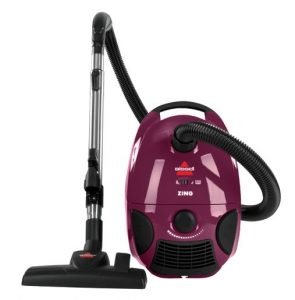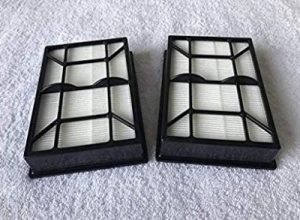So, bagged vs bagless vacuum – which one should you buy?
The top-most features vacuum buyers consider before purchase are the vacuum’s suction power, filtration, and type. Several buyers also have concerns when deciding whether to choose a bagged or bagless vacuum. Bagless vacuums differ from bagged vacuums mostly in dirt holding containers, their capacity, and also pricing.
Bagged vacuums require you to continuously invest in bags. Thus, they are not as cost-effective as bagless vacuums. On the other hand, they are known to release minimal dust & pollutants into the air during emptying contrary to bagless vacuums. Vacuum users who suffer allergic attacks consider this a significant feature.
The main purpose of this article is to explore the similarities and differences between bagged and bagless vacuums. We will also review the pros & cons of each type as we try to compare them.
Differences and similarities between bagged and bagless vacuums
Most users claim bagless vacuum cleaners are more thorough. However, depending on the model you purchase, they are almost similar to bagged ones in terms of performance. They also come accompanied with several accessories as well.
Bagless vacuums are a modern development. The initial vacuum cleaners did not have dirt chambers, and, therefore, were all bagged.
A vacuum’s disposal system is what determines if it’s bagged or bagless. Generally, bagless vacuums are more popular as compared to bagged ones. This could be because they are a newer invention and they stir a bit of excitement. It could also be as a result of the convenience of not having to buy bags.
Bagless vacuums

A bagless vacuum normally has a dirt chamber (dust/dirt cup or dust/dirt bin). These dirt chambers are usually clear or translucent. Therefore, you can see the dirt filling up as you vacuum.
The vacuum’s dirt bin usually has a press button to uninstall and install from and back to the unit. It is also often fitted with an easy-to-flip lid to release dirt once opened. This can be at the top or the bottom depending on the manufacturer or model.
When you finish vacuuming, you simply empty, rinse and re-fix the dirt canister.
Bagged vacuums

Bagged vacuums, on the other hand, don’t have dust bins. Instead, there is a slot for fixing the bags. As you vacuum, the dirt is sucked up into the bag which also acts as a filter. Although various vacuum models have varying dirt capacity, you do not need to empty the bag every time you vacuum as bags usually hold more dirt.
A single bag can last more than a month depending on how often you vacuum and how much dirt is picked up (refer to the user manual for time frame estimates). Once a bag is full, it’s detached and disposed of then a new one is installed.
If you’re lucky, you may have a good bagged vacuum with a ‘full bag’ indicator light. So, you don’t have to worry about when to dispose of the bag.
Bagged vs Bagless Vacuums: Pros & Cons
To help us determine which of the vacuums serve better, let’s have a look at the advantages and disadvantages of each.
Pros of bagless vacuum cleaners
Affordable
Even if the purchasing price per model may differ, the overall maintenance cost is lower. Since you don’t need to buy bags and the dirt container lasts as long as the vacuum’s lifetime.
This makes bagless vacuums cheaper in the long run. The container only needs to be rinsed and re-installed once it reaches its ‘Max’ capacity.
Convenient
With a bagless vacuum, you never have to worry about when and where to get bags. The containers are also easy to empty. Retrieval of valuables that were accidentally sucked up is also a walk in the park.
Easy to monitor dirt level
The dirt containers are normally clear. Therefore, you can see as it fills up and you can tell when to empty whether the vacuum has a sensor or not. It’s usually advisable not to wait till the bin is 100 percent full.
Cons of bagless vacuum cleaners
Exposure to dirt and allergens
There’s a possibility of spilling dirt as you empty and releasing allergens back into the air. You may also need to use your hands to remove stuck-on debris. This may not bode well with allergy sufferers and people living with asthma.
To curb this, however, you can use protective gear for the dust. For example gloves; this translates to extra cost.
Frequent emptying
As much as bagless containers are easy to empty, they tend to have limited dirt holding capacity. This necessitates frequent emptying especially if the area you are cleaning is large. The area could also be small but has lots of spills, pet hair and other forms of debris.
Frequent replacement and cleaning of filters
Bagless vacuums operate in such a way that they direct the larger debris into the dust cup, leaving the smaller particles for the filters. As much as the filters are effective, they may require frequent cleaning and changing.
Frequent cleaning may cause inconvenience as the filters need to air dry for about 24 hours. Also, replacement means extra cost. If filters are not frequently cleaned, they clog up and cause the vacuum to overheat and eventually get damaged.
Clogging also reduces suction power, which means that the performance is negatively impacted.
Pros of bagged vacuum cleaners
Filtration
Any good vacuum bag must have excellent filtration. Since it’s sealed, it can trap and hold dirt and allergens inside the vacuum. Most bagged vacuums also use HEPA filtration (also applicable in bagless vacuums). This enables them to effectively keep the indoor air allergen-free.

One advantage of a HEPA filter vacuum is the ability to trap at up to 99.97% of all dust mites, pollen, dust, and other allergens. This makes them more efficient in capturing allergens as compared to other filters.
This is a huge plus especially for people prone to allergic reactions and asthma attacks. HEPA filters also don’t require frequent cleaning. Additionally, HEPA filters often last the lifetime of the vacuum so there is no need for replacement.
Convenience and hygiene
Bagged vacuums hardly require maintenance. Since the filter is fabricated directly onto the bag, it does not easily clog and it hardly requires being removed.
Also, bagged vacuums are more proficient at filtration. Once the dirt is in the bag, there are minimal chances that you will ever get to touch it. Besides, it will not escape back to the air because the bag is sealed.
Dirt, various allergens, and debris remain trapped during vacuuming and after because you just detach, seal and dispose of the bag after use. This avoids any spills or contamination as would happen using a bagless vacuum.
Convenient, isn’t it?
Cons of bagged vacuum cleaners
Risk of damage
Except for the newer vacuum models that alert when the bag is nearly full, you have no way of telling whether the bag is about to fill. This may risk the vacuum’s performance. Also, constant manual checking may result in damage to the bag or parts of the vacuum.
Inconsistent performance
As the bag continues to fill; the powerful performance of the vacuum declines. The vacuum operates optimally with newer or near-empty bags.
Getting bags can be tedious and pricey
First of all, if you use the old model vacuums, there are chances you will struggle getting right-fitting bags. If you get them, then you need to buy in bulk or buy two packs such that once you open the second pack, it triggers you to re-order.
Various models have differing bags which vary in prices. Can you comfortably handle the continued expenditure of buying the bags? Additionally, the prices are subject to go up over time.
Bagless vs Bagged Vacuums: Take Away
How effectively a vacuum cleans is mostly dependent on other features, not necessarily its disposal system. Apart from being bagged or bagless, other qualities tend to be similar. Both types come with several accessories and have competing suction power.
You are the one to decide which is better in the bagged vs bagless vacuum contest. However, according to us, a vacuum’s suction power, pricing, suitability to your flooring type, and filtration come before its dirt disposal system.
And as we have seen, whether the vacuum is bagged or not doesn’t necessarily affect its suction. Nonetheless, bagged vacuums are generally better when it comes to handling allergens during cleaning and emptying. So, we recommend them for fighting allergies and asthma.
With the above details regarding the pros and cons of each, you can have an easier time making the decision.